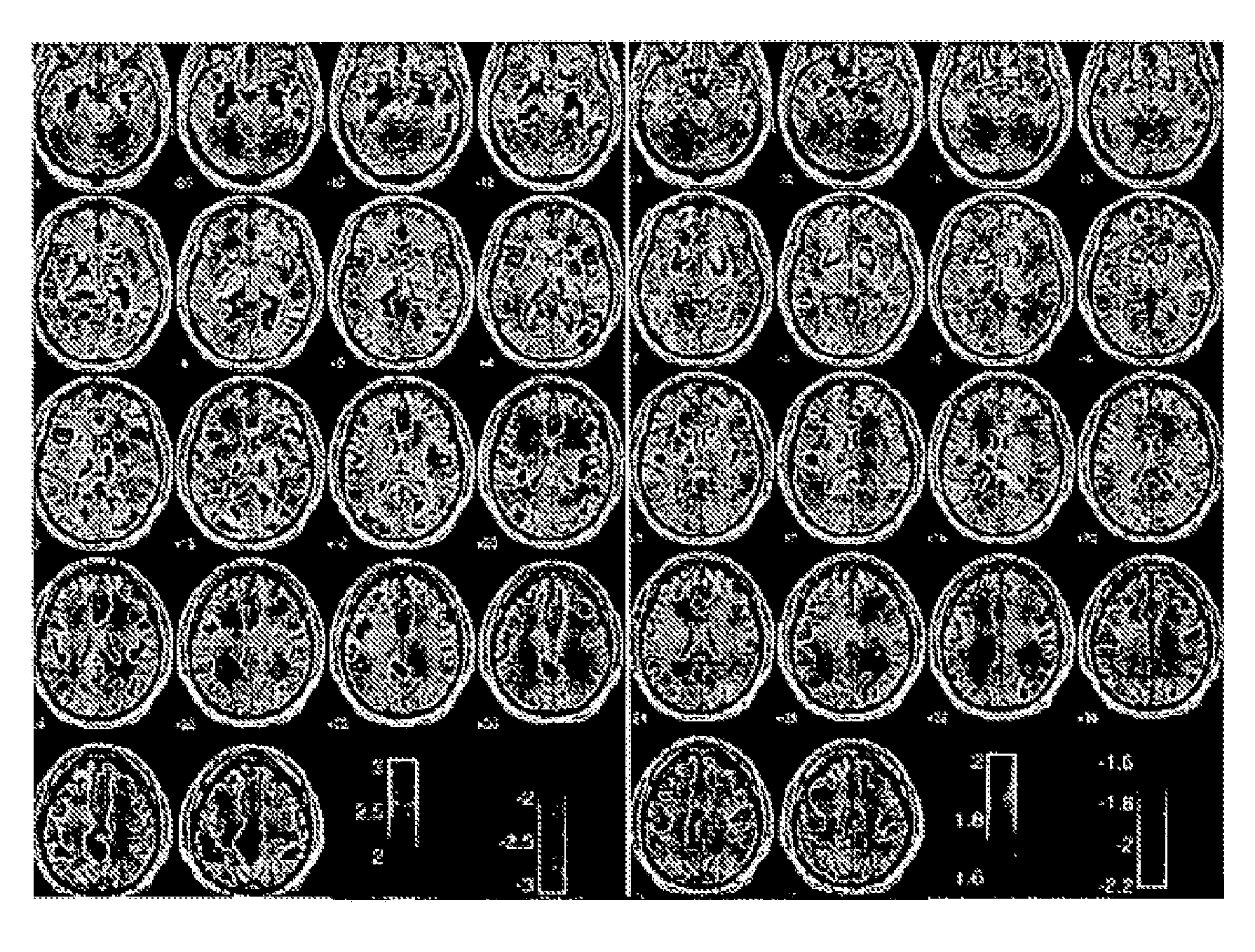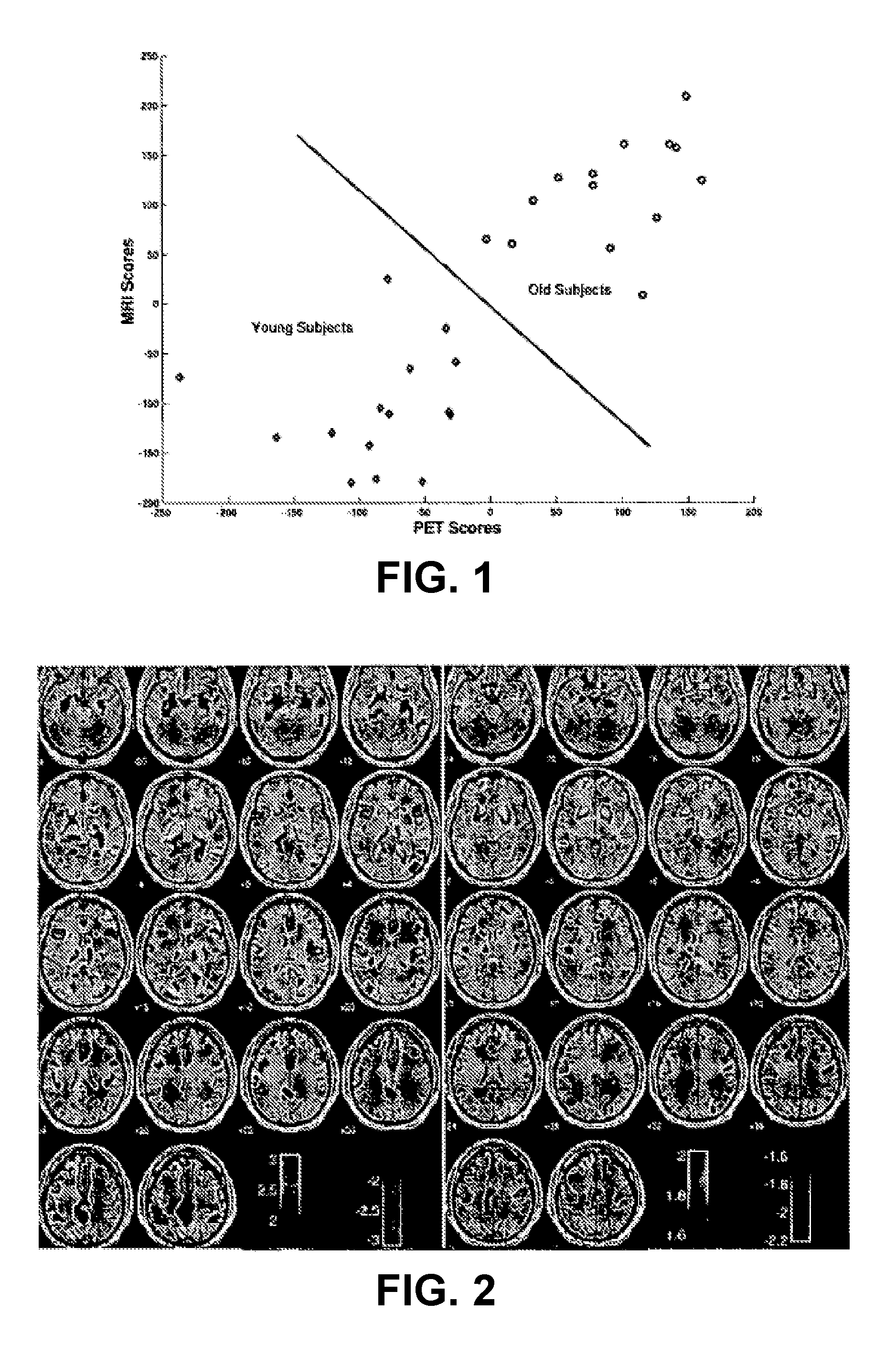Accelerated evaluation of treatments to prevent clinical onset of alzheimer's disease
a technology for alzheimer's disease and treatment, applied in the field of medical treatment evaluation systems and methods, can solve the problems of ad, ad is a prevalent problem, and a rapidly growing public health problem, and achieve the effect of reducing a number of voxels
- Summary
- Abstract
- Description
- Claims
- Application Information
AI Technical Summary
Benefits of technology
Problems solved by technology
Method used
Image
Examples
Embodiment Construction
[0036]Exemplary embodiments of advanced systems and methods for evaluating the efficacy of prospective preventative treatments for Alzheimer's disease (“AD”). Ultimately, the efficacious treatments evaluated in accordance with the systems and methods aim to contribute to improved clinical outcomes in patients at risk for brain-related disorders. Embodiments of the systems and methods described herein apply advanced computational algorithms for the voxel-based analysis of brain images to track longitudinal changes and evaluate investigational prevention therapies with improved power, making the use of these and other biomarker endpoints practical for use in AD prevention trials. Without the systems and methods disclosed herein, brain imaging measurements cannot be analyzed with sufficient power to evaluate prospective AD prevention treatments in a practical way.
[0037]The use of brain imaging measurements or fluid biomarkers to track changes that provide meaningful information about p...
PUM
| Property | Measurement | Unit |
|---|---|---|
| full-width-at-half-maximum | aaaaa | aaaaa |
| size | aaaaa | aaaaa |
| FWHM | aaaaa | aaaaa |
Abstract
Description
Claims
Application Information
 Login to View More
Login to View More - R&D
- Intellectual Property
- Life Sciences
- Materials
- Tech Scout
- Unparalleled Data Quality
- Higher Quality Content
- 60% Fewer Hallucinations
Browse by: Latest US Patents, China's latest patents, Technical Efficacy Thesaurus, Application Domain, Technology Topic, Popular Technical Reports.
© 2025 PatSnap. All rights reserved.Legal|Privacy policy|Modern Slavery Act Transparency Statement|Sitemap|About US| Contact US: help@patsnap.com



